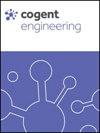Experimental investigation of mechanical properties and morphology of bamboo-glass fiber-nanoclay reinforced epoxy hybrid composites
IF 2.5
Q2 ENGINEERING, MULTIDISCIPLINARY
引用次数: 0
Abstract
In the present work, the mechanical and morphological characterization of bamboo-glass fiber-nanoclay epoxy hybrid composites is carried out. Materials are prepared using a hand lay-up process with different wt.% of bamboo fiber, glass fiber, nanoclay, and epoxy. As per ASTM standards, fabricated composite laminates are cut and tested for tensile and flexural properties. The bamboo fiber epoxy composites (BFEC) display the tensile and flexural strength of 137 and 170 MPa, respectively. Hybrid composites, viz. bamboo-glass fibers epoxy composites (BGFEC), display improved tensile (180–240 MPa) and flexural (225 to 320 MPa) strengths compared to BFECs. Glass fiber epoxy composites (GFEC) display maximum tensile (265 MPa) and flexural (360 MPa) strengths among all the composites. Furthermore, the addition of nanoclay improves the tensile (by 6 to 8%) and flexural (by 8 to 10%) strengths of epoxy, BFEC, BGFEC, and GFECs. SEM analysis is conducted for fractured tensile specimens to understand the reasons for specimen failure.竹材-玻璃纤维-纳米粘土增强环氧复合材料力学性能及形貌的实验研究
本文对竹-玻璃纤维-纳米粘土环氧复合材料进行了力学和形态表征。材料采用不同wt %的竹纤维、玻璃纤维、纳米粘土和环氧树脂的手工铺层工艺制备。根据ASTM标准,制造的复合材料层压板被切割并测试拉伸和弯曲性能。竹纤维环氧复合材料(BFEC)的拉伸强度为137 MPa,弯曲强度为170 MPa。混合复合材料,即竹玻璃纤维环氧复合材料(BGFEC),与bfec相比,显示出更高的拉伸强度(180-240 MPa)和弯曲强度(225 - 320 MPa)。玻璃纤维环氧复合材料(GFEC)在所有复合材料中显示出最大的拉伸强度(265 MPa)和弯曲强度(360 MPa)。此外,纳米粘土的加入提高了环氧树脂、BFEC、BGFEC和gfec的拉伸强度(提高6 - 8%)和弯曲强度(提高8 - 10%)。对断裂拉伸试样进行SEM分析,了解试样破坏的原因。
本文章由计算机程序翻译,如有差异,请以英文原文为准。
求助全文
约1分钟内获得全文
求助全文
来源期刊

Cogent Engineering
ENGINEERING, MULTIDISCIPLINARY-
CiteScore
4.00
自引率
5.30%
发文量
213
审稿时长
13 weeks
期刊介绍:
One of the largest, multidisciplinary open access engineering journals of peer-reviewed research, Cogent Engineering, part of the Taylor & Francis Group, covers all areas of engineering and technology, from chemical engineering to computer science, and mechanical to materials engineering. Cogent Engineering encourages interdisciplinary research and also accepts negative results, software article, replication studies and reviews.
 求助内容:
求助内容: 应助结果提醒方式:
应助结果提醒方式:


